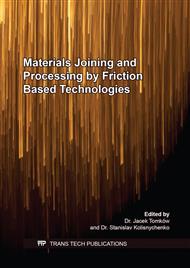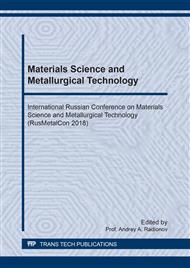p.913
p.921
p.928
p.934
p.939
p.945
p.950
p.959
p.966
Welding of Valve Steels of Different-Sized Cross Sections
Abstract:
This paper considers the results of studies of the welded joints formation in conventional friction welding of pieces with different-sized cross sections. The features of the formation of joints associated with the asymmetry of the temperature field in the pieces are defined. The results of studies of the main parameters of the welding process are given which influence on the appearance, the microstructure of the joints and the valve after the stamp. The optimum parameters of the welding mode are set; recommendations are given.
Info:
Periodical:
Pages:
939-944
Citation:
Online since:
February 2019
Authors:
Price:
Сopyright:
© 2019 Trans Tech Publications Ltd. All Rights Reserved
Share:
Citation:



